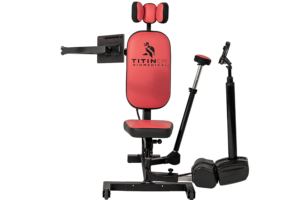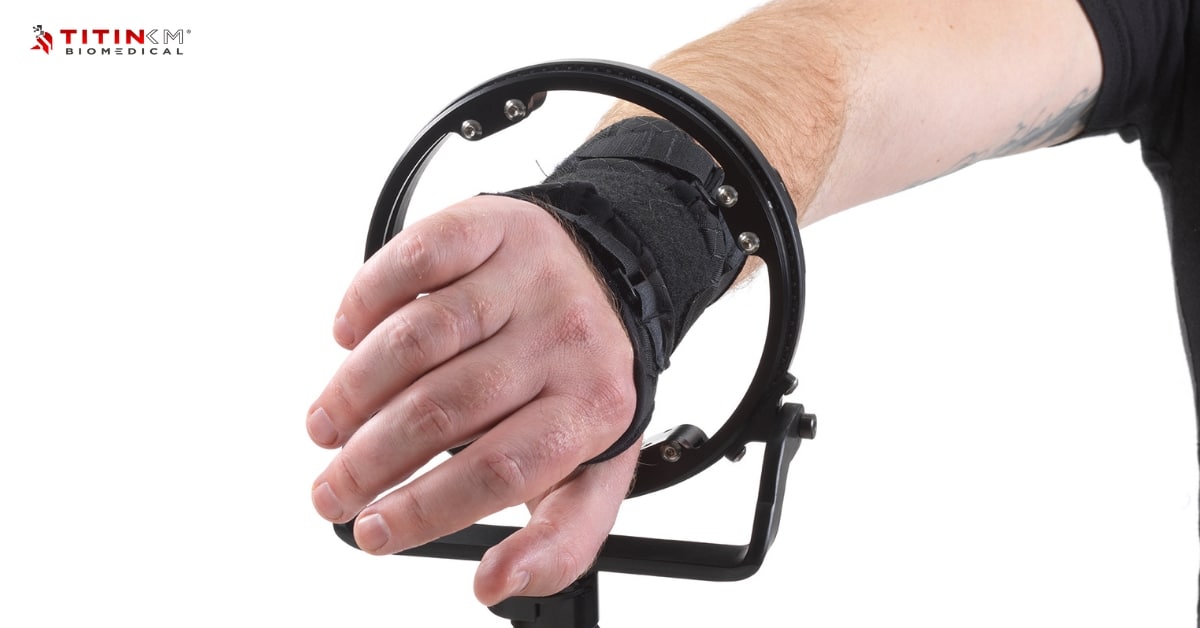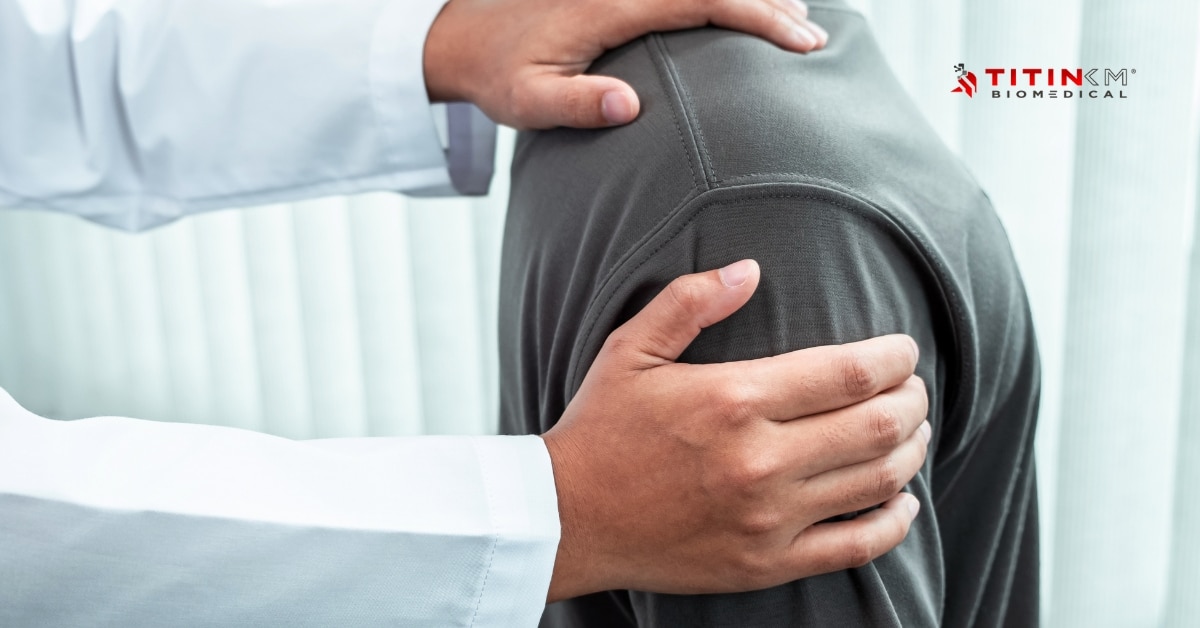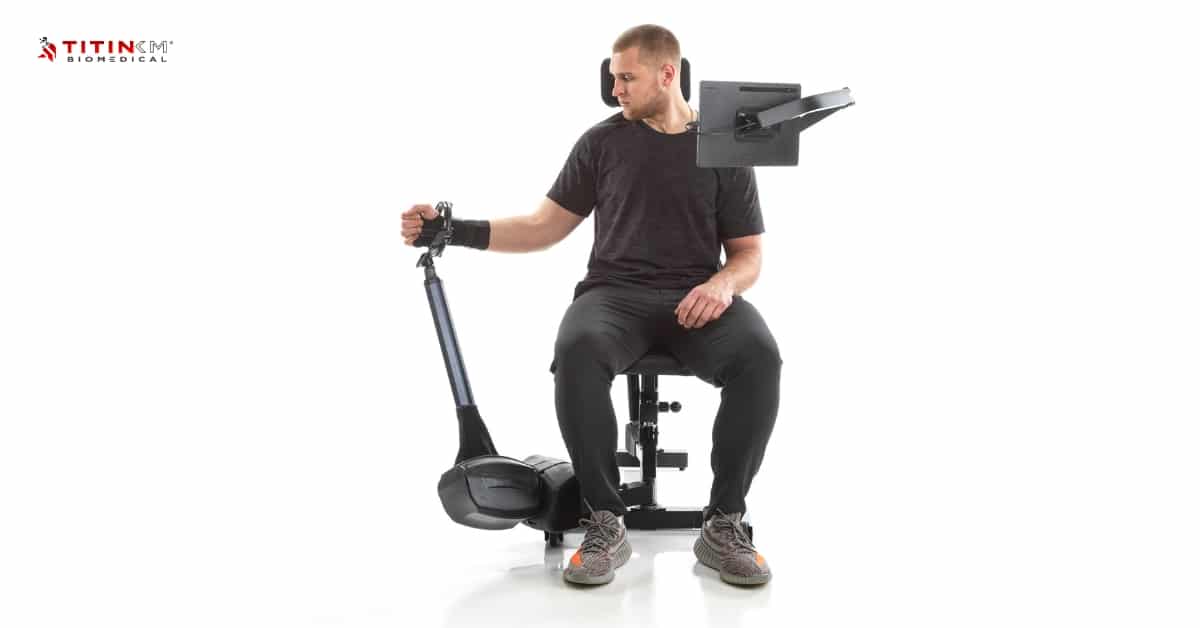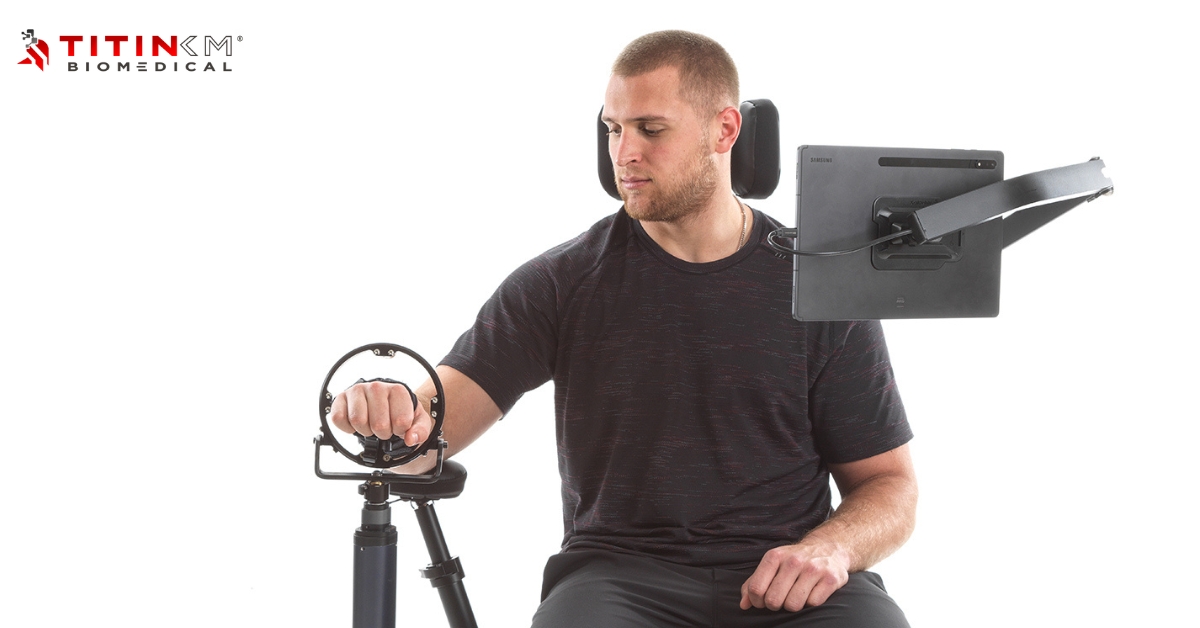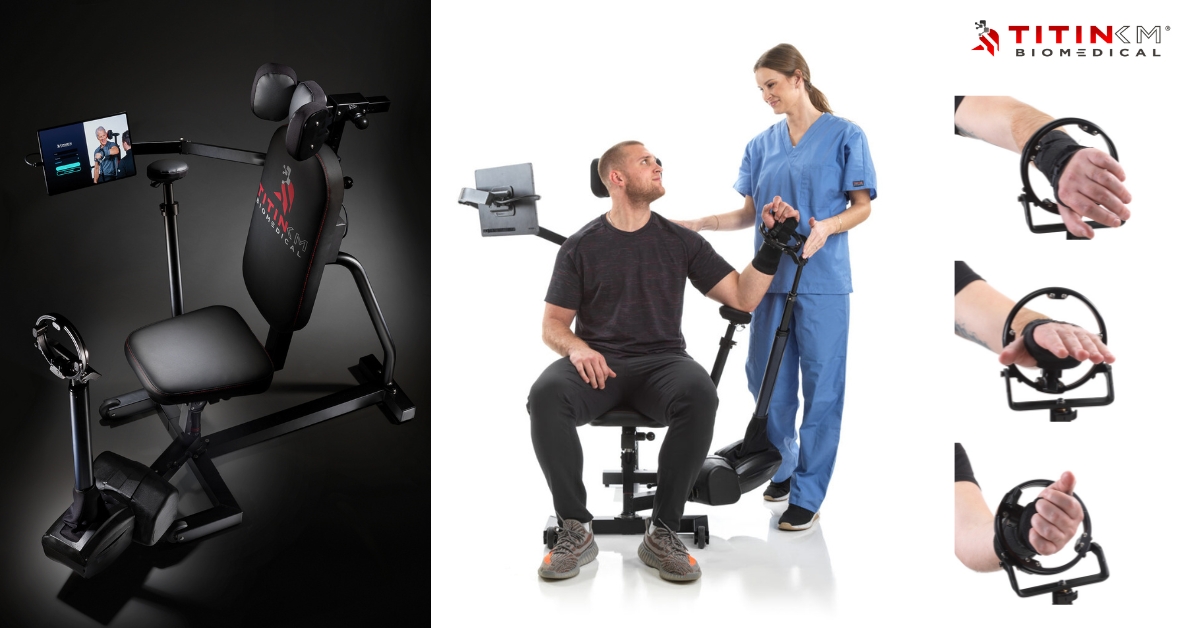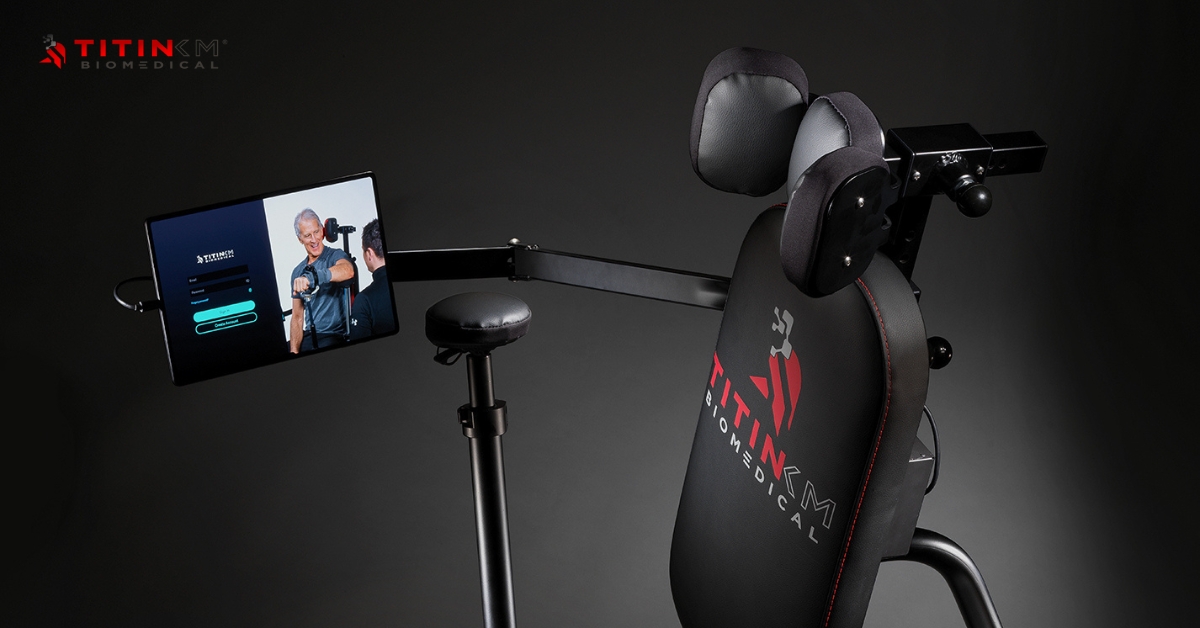
With the recent Clinical Practice Guidelines for rotator cuff treatment encouraging the use of more objective assessment tools, you may be considering adding new equipment to your clinic. When it comes to helping your patients achieve optimal recovery, selecting the right shoulder rehabilitation equipment is one of the most critical decisions you’ll make for your practice. The equipment you choose not only impacts patient outcomes but also defines your practice’s efficiency, reputation, and profitability.
With so many options available, how do you make the best choice? We’re here to guide you through a thoughtful selection process to ensure that you’re making an informed decision. Let’s explore key considerations and actionable steps to choose the equipment that’s right for you, your patients, and your practice.
Assessment of Practice Needs
Before diving into internet searches or tech specifications, take a step back and evaluate your practice’s unique needs. Here are some questions to guide your assessment:
-
- Who are your patients? Are you working primarily with athletes, older adults, or postoperative patients? Different populations have varying rehabilitation needs.
- What conditions are you treating? Focus on equipment tailored to the conditions you treat most often, such as rotator cuff injuries, frozen shoulder, or impingement syndrome.
- How much space do you have? Consider whether your practice has enough room for larger, stationary machines or if compact, portable options are more practical.
- What’s your staff expertise? Your team’s familiarity with certain technologies or training requirements could influence your decision.
- Are you following the newest guidelines? The newest CPGs for rotator cuff strongly encourage more objective measurements than manual muscle testing.
Taking the time to answer these questions will clarify your priorities and ensure you’re investing in equipment that aligns with your practice goals.
Key Features to Consider
Shoulder rehabilitation equipment varies widely in features and capabilities. To deliver the best care to your patients, prioritize equipment that includes:
-
- Omnidirectional Resistance: This feature is crucial for providing 360-degree strength training, replicating natural shoulder movements, and maintaining a near constant load on the joint for precision focus of interventions.
- Multiplanar Training: Look for devices that support exercises across all planes of motion to promote comprehensive recovery and provide the ability for patients to focus on functional movements.
- Real-Time Feedback: Technology that tracks performance metrics like range of motion, strength, and progress helps both you and your patients stay informed which in turn can help to improve outcomes by improving clinical decisions.
- Customization Options: Equipment that can adapt to individual patient needs, such as adjustable resistance levels and meeting demands of various body types and pathologies ensures better outcomes.
- Ease of Use: Intuitive interfaces and clear instructions allow your staff to continue focusing on the patient first without affecting treatment flows and clinic efficiency.
- Objective Assessment: Equipment that seamlessly integrates objective data regarding treatment and patient performance not only meshes with most current recommendations for best treatment but also helps improve patient outcomes.
The Humero Tech C1 from TitinKM Biomedical is a prime example of innovation in shoulder rehabilitation. Its dynamic features like bilateral use, live movement displays, integrated sensor technology and data-driven training set it apart from legacy therapy tools.
Budget Considerations
Budget is often a determining factor in equipment selection. While it’s important to be mindful of costs, don’t sacrifice quality for a lower price tag. Here’s how to strike the right balance:
- Calculate Long-Term Value: Higher upfront costs can be offset by long-term durability, reliability, and patient satisfaction. Boosting clinic reputation over the long term can drastically help offset the costs of more expensive, quality equipment.
- Compare Financing Options: Many manufacturers offer payment plans or leasing options to ease the financial burden.
- Avoid Hidden Costs: Factor in expenses for maintenance, software updates, or staff training.
Investing in high-quality equipment like the Humero Tech C1 can help you reduce costs associated with inefficiencies and frequent replacements as well as differentiate your clinic and signal to your community and referral partners that you are investing in your patient’s outcomes.
Technology Integration Requirements
In today’s data-driven healthcare environment, seamless technology integration is non-negotiable. Consider equipment that:
- Works with Custom Apps: Devices that pair with dedicated apps streamline data collection and program adjustments.
- Offers Cloud-Based Data Sharing: Enables easy collaboration between patients, therapists, and physicians.
- Is Compatible with EMR Systems: Simplifies record-keeping and improves workflow efficiency.
The Humero Tech C1’s integration capabilities make it easier on your providers to start using from day one and can help streamline clinic efficiency and provider workflow.
Implementation Timeline
Introducing new equipment involves more than just delivery. Assess how long it will take to:
- Train Your Staff: Ensure your team is proficient in operating the equipment and understanding its features.
- Set Up Your Space: Allocate time for arranging the equipment in your practice to maximize usability.
- Educate Patients: Help patients feel comfortable and confident using the new technology during therapy sessions.
Choosing a device with intuitive features and robust support services, like the Humero Tech C1, can significantly shorten the implementation timeline with its straightforward and simple user interface.
ROI Calculations
To justify your investment, calculate the potential return on investment (ROI). Consider these factors:
- Increased Patient Volume: High-quality equipment can attract more patients seeking advanced care.
- Better Patient Outcomes: Faster recovery times and improved satisfaction lead to positive reviews and referrals.
- Streamlined Operations: Efficient devices save time, reducing provider focus on non-patient facing efforts.
- Reputation Boost: Cutting-edge technology enhances your practice’s reputation as a leader in shoulder rehabilitation.
The combination of tangible and intangible benefits makes investing in advanced equipment like the Humero Tech C1 a smart decision for your practice.
Empower Your Practice with the Right Tools
Selecting the best shoulder rehabilitation equipment is about more than just technology—it’s about transforming your practice and improving patient lives. By assessing your needs, prioritizing key features, and making strategic investments, you’re setting your practice up for long-term success.
If you’re ready to elevate your shoulder therapy offerings, consider the Humero Tech C1 from TitinKM Biomedical. Its cutting-edge features and user-friendly design make it a standout choice for practices like yours.
Take the First Step Today
Don’t wait to revolutionize your approach to shoulder rehabilitation. Contact us at [email protected] to learn how the Humero Tech C1 can transform your practice. Let’s work together to create a future where exceptional shoulder care is the standard.
- Rehabilitation after Shoulder Replacement Surgery: What to Expect - November 6, 2025
- The Science Behind Omnidirectional Resistance in Shoulder Therapy - November 4, 2025
- Shoulder Tendonitis: From Inflammation to Action with Advanced Rehab - October 29, 2025
